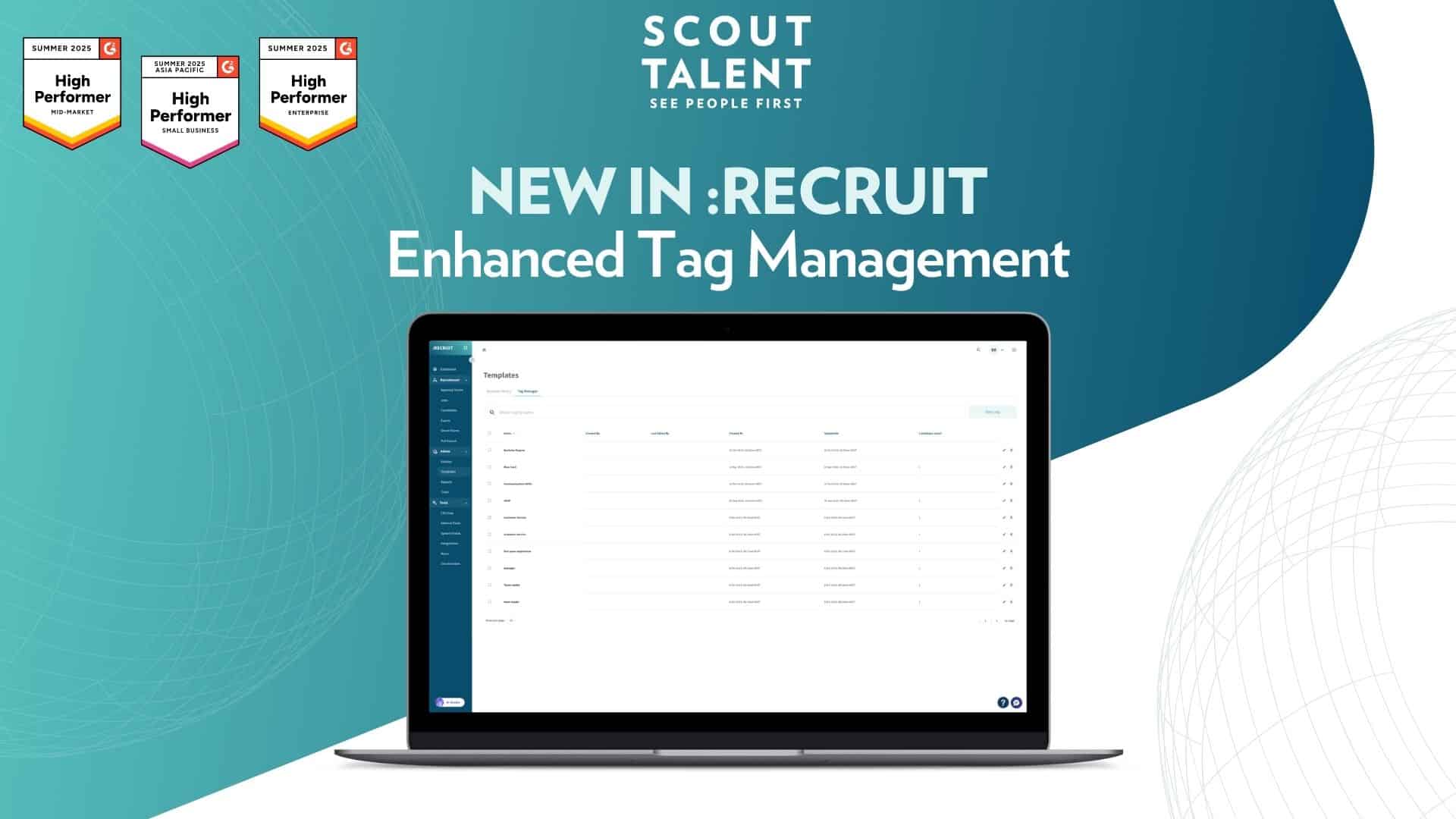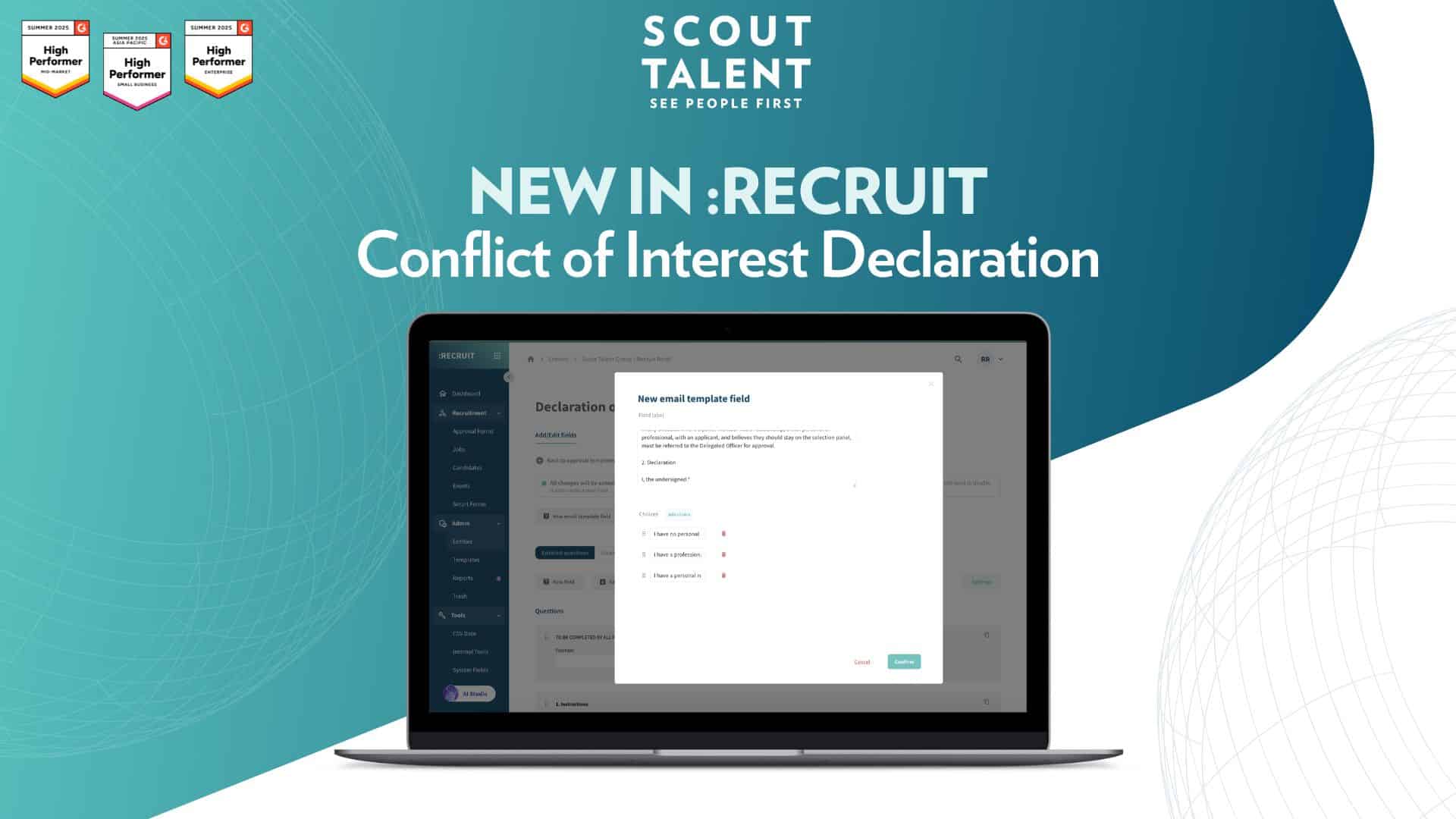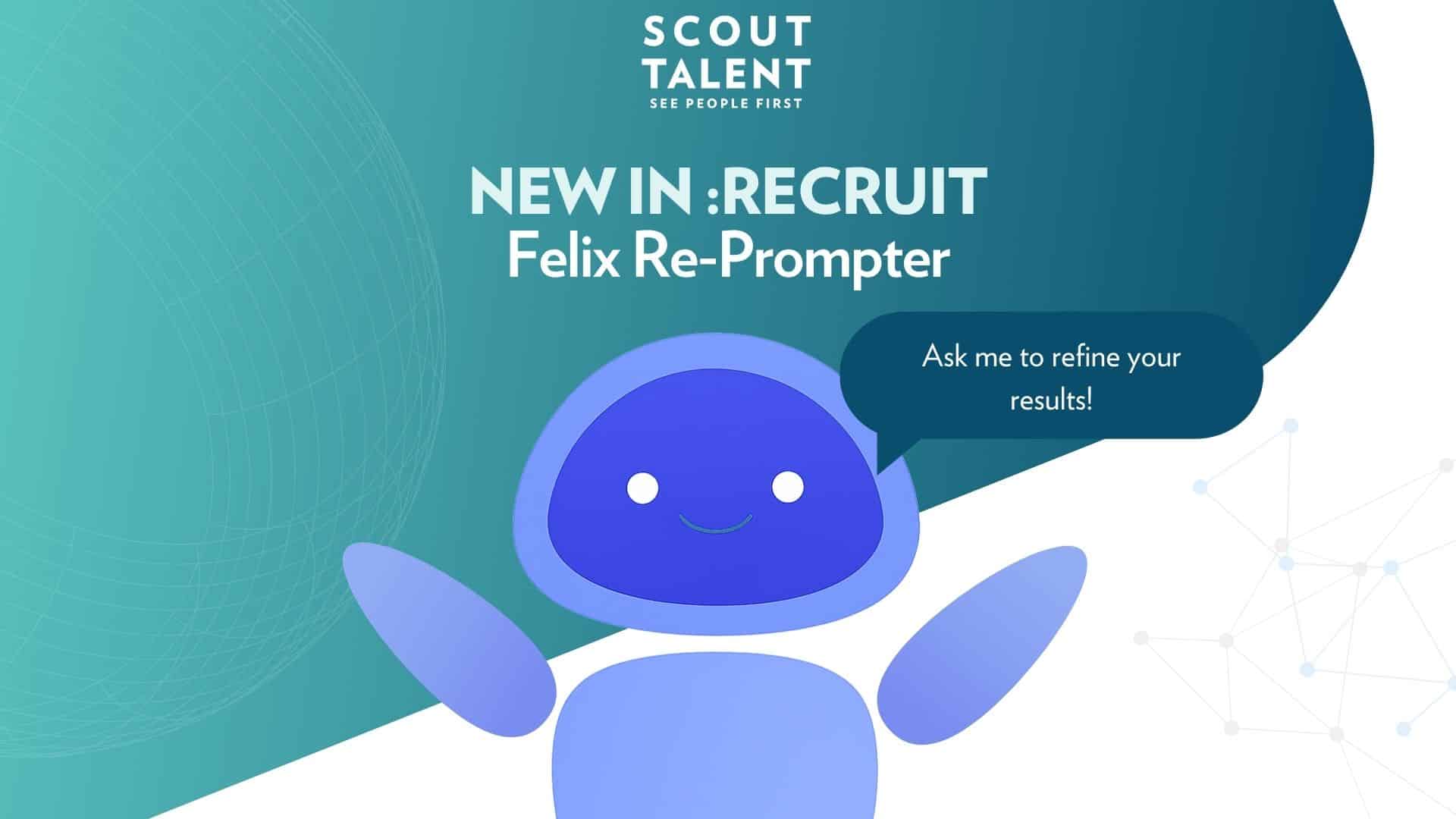Imagine having your top candidate step into your job interview, which feels like an engaging, informative conversation. As a talent acquisition professional, you greet them with transparent communication and dive into interview questions tailored to better understand their strengths and weaknesses. These questions not only relate to their employment history but also explore how they will perform in different scenarios. This approach makes the candidate feel seen and valued, while allowing you to showcase your employer brand and draw out relevant information that is crucial for making informed hiring decisions. The good news is, that this isn’t just a dream scenario; it’s a modern approach to improving the candidate experience. By balancing the human touch with AI (Artificial Intelligence) technology, Talent Acquisition and Recruitment professionals can more easily create a seamless, inclusive, and engaging hiring journey. Hiring top talent starts with providing a positive candidate experience, making every interaction feel welcoming and informative. Nearly 4 in 5 candidates (78%) say the overall candidate experience they receive is an indicator of how a company values its people. This commitment to providing a superior candidate experience is key to securing the best talent. AI can support this in a variety of ways, ensuring every candidate receives the information they need when they need it, enhancing their overall experience and engagement.
Candidate experience refers to the perception and interaction a candidate has with an employer during the recruitment process. It encompasses every touchpoint, from the initial job application to onboarding, including the company website and social media presence. All of this influences how candidates perceive the employer’s brand. A positive candidate experience can lead to higher candidate recommendations, offer acceptance rates, and overall employer brand reputation. Employers can stand out and attract the best candidates in a crowded market by focusing on the pillars of efficient processes, clear communication, personalised engagement, and leveraging AI to support recruiters in their day-to-day roles.
However, achieving this ideal candidate experience is not without difficulties. Recruitment professionals often encounter significant obstacles that can hinder their efforts. These issues must be addressed to ensure that the candidate experience remains positive and effective. Here are some of the key recruitment challenges:
Recruitment Challenges
- An increased number of job applications: Recruitment teams face significant challenges due to the rising number of job applications per role, which puts pressure on efficient processes. A high volume of applications means more time spent on initial screenings and a higher potential for qualified candidates to be overlooked.
- Managing candidate expectations: Recruiters recognise the importance of being transparent and timely in their interactions, as candidates expect regular updates and feedback. 56% of candidates reported the most frustrating part of the hiring process is waiting for updates. Clear communication throughout the hiring journey is essential to meet these expectations. However, this request adds more work to already busy recruiters and hiring managers, further straining their overflowing days.
- Providing personalised interactions: Personalised engagement is important to make candidates feel valued. Recruiters strive to tailor all interactions, recognise candidates for their unique skills, and provide customised interview questions to create a more engaging experience. However, this also adds to the workload of busy recruiters and can affect time-to-hire metrics.
Embracing AI in Recruitment
As AI becomes more familiar in HR, it has emerged as a valuable tool for Talent Acquisition and Recruitment Professionals, supporting and enhancing their roles. AI can play a pivotal role in improving the overall recruitment process and candidate journey. 43% of HR professionals believe AI will make their jobs more efficient. When Scout Talent recently asked candidates for a wish list for recruiters about the recruitment process, one of the top responses was, “Remain human-centric despite a highly technology-based recruitment process.” This underscores the need to use technology tools to improve traditional recruitment processes while still maintaining a human touch. 45% of recruiters say AI helps automate tasks, allowing them to spend time on more fulfilling work. Using AI strategically can provide that necessary balance.
4 Ways AI Can Enhance The Candidate Experience
There are many ways to enhance the candidate experience, but in this blog post, we will focus on four key methods. These methods were chosen because they leverage AI to specifically address common pain points in the recruitment process, streamline operations, and provide a more personalised journey for candidates.
1. Helping You Get Your Jobs to Market Faster
AI-powered features in recruitment CRM and applicant tracking systems (ATS) can support recruiters in several ways to expedite getting a job to market, such as rapidly creating job ads, talent landing pages, and social media posts. By automating these typically time-consuming processes, talent acquisition and recruitment professionals have more time to connect with top talent. Scout Talent’s AI Studio has helped recruiters save 80% of the time typically spent on creating recruitment collateral, allowing them to focus more on engaging with potential candidates.
AI enhances job ad creation by analysing successful postings and optimising language, format, and keywords, ensuring job ads are both compelling and effective. AI can also help ensure that job ads clearly articulate the requirements and responsibilities, so candidates don’t face any surprises during the interview process. This transparency enhances the candidate’s understanding and sets clear expectations.
Surveyed applicants reported that a strong online presence and clear communication are key factors influencing their decision to apply for a job, according to Scout Talent’s Employer Branding 2024 Insights report.
2. Streamlining Your Application Process
One pain point for candidates is the length of the overall application process. Recruiters often share this frustration and can use AI to significantly reduce the time to hire. AI can simplify a lengthy process by automating resume screening, which is especially useful when there are many applicants for a role. By matching candidates’ experience against job requirements without bias, AI ensures a fair and objective screening process. This automation not only saves time but also enhances the accuracy of candidate selection.
“AI [Suite] reduced my workload by 1/3 by pinpointing and highlighting skills and experience that we are looking for in our valued team members.” – Senior Talent Acquisition Specialist, Scout Talent client.
AI can also instantly generate helpful screening questions and provide targeted interview questions to delve deeper into candidates’ skills. This approach ensures the most qualified candidates are identified more quickly and effectively. This time-saving benefit allows recruiters to focus more on engaging with candidates and selecting the best fit for the job.
3. Creating Personalised Interview Questions
AI-generated interview questions can help you ask the right questions by crafting tailored questions that align with each applicant’s unique qualifications and competencies. By analysing individual profiles, AI can generate relevant and targeted questions, including situational and behavioral ones, that make the interview process more engaging and personalised, providing further insights. With 57% of recruiting professionals reporting that hiring based on skills is a priority, using AI-generated interview questions allows you to assess candidates more effectively. This approach ensures you gain deeper insights into their abilities and suitability for the role. Tailored interviews create a positive and relevant encounter while enabling recruiters to make strategic hiring choices.
4. Providing Clear and Transparent Communication
Effective communication with candidates and within the hiring team is crucial for a positive candidate experience. Regular updates on application status and next steps ensure that all stakeholders have the same information and that candidates remain informed and engaged throughout the hiring process. AI tools can automate these communication processes by sending timely notifications and updates to candidates, ensuring they are always aware of their application status. Additionally, AI can generate and share curated candidate summaries with stakeholders at the touch of a button, promoting transparency, aligning expectations, and streamlining decision-making.
The Future of Recruitment: Harnessing AI for Success
By integrating these practical AI-powered solutions into the recruitment process, employers can streamline operations, improve communication, and provide a more personalised experience for candidates. These advancements save time, reduce manual workloads, and ensure that each candidate feels valued and engaged. As a result, companies can distinguish themselves in a competitive market by attracting and retaining top talent. Embracing AI in recruitment is not just about efficiency; it’s about creating an inclusive process that reflects the company’s commitment to innovation and excellence. By leveraging AI technology, employers can build stronger relationships with candidates, foster a positive employer brand, and achieve greater success in their talent acquisition efforts.
For a comprehensive understanding of how AI can transform your HR and recruitment processes, refer to our guide AI in Action: A Practical Guide to AI Implementation in HR and Recruitment. Learn how to easily implement AI and harness its power to enhance your recruitment strategies. Discover more about transforming your workplace and helping your company thrive in today’s dynamic environment.
Additional Reading:



